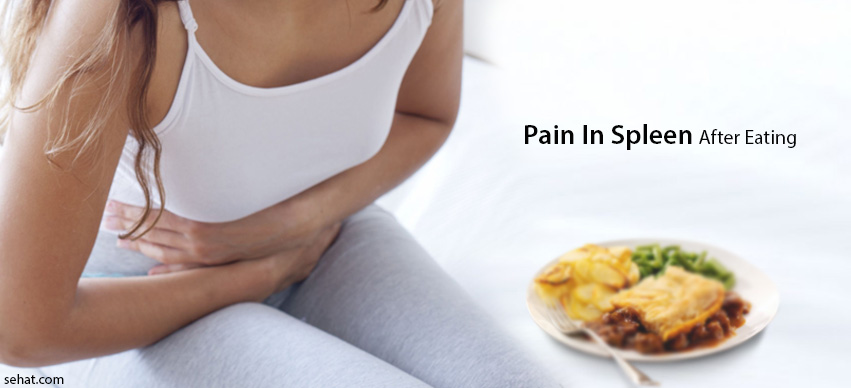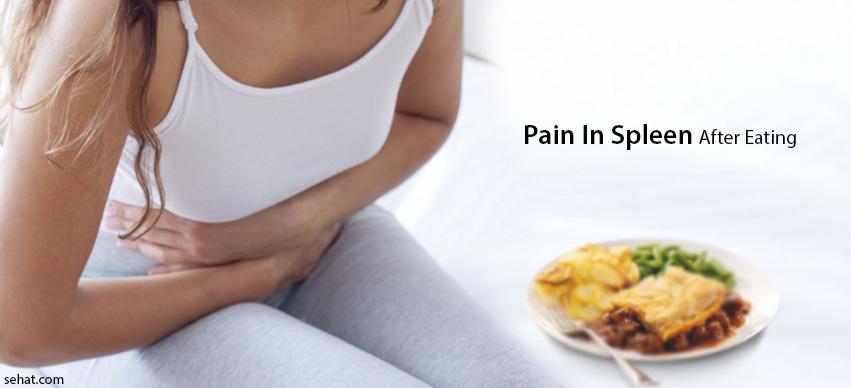Evolution of Prescription Refills: From In-Person to Online ..
6 Min Read


Have you ever had pain or a feeling of fullness in the left side of the abdomen after eating? If you are wondering why then it could be if you have been over-eating or if your spleen is enlarged. The stomach is a hollow organ which lies in the upper half of the abdomen, slightly toward the left. When the stomach is distended with food, it tends to expand in all directions except backwards.
On the left side of the abdomen, the stomach lies in contact with the pancreas, left kidney, spleen and diaphragm. At the lower side, it comes in contact with transverse part of the colon and some parts of small intestine.
Spleen, on the other hand, is an organ belonging to the reticuloendothelial system or the immune system of the body. It is located in the left side of the abdomen and lies in close relation with the stomach, kidney, pancreas and the large intestine.
Pain in spleen after eating means that you either have had a full meal (this is often transient) or your spleen may be enlarged due to some reason. An enlargement of spleen by weight or size is called Splenomegaly in medical terms.
| Parameter | Normal | Splenomegaly | Massive Splenomegaly |
| Length | 11 cm | 11 – 20 cm | More than 20 cm |
| Weight | 70 – 200 grams | 400 – 500 grams | More than 1000 grams |
In certain conditions, the liver is also enlarged along with the spleen. This condition is called Hepato Splenomegaly.
Causes for pain in spleen region after eating are
| Sr. No. | Cause | Description |
| 1. | Infective | Infections which can cause enlargement of the spleen are
|
| 2. | Congestive (pooling of blood) | Certain conditions of circulation which can cause enlargement of the spleen are
|
| 3. | Inflammatory | Inflammatory conditions responsible for an enlarged spleen are
|
| 4. | Haematological | Blood disorders causing enlargement of the spleen are
|
| 5. | Lysosomal Storage Disease |
|
| 6. | Miscellaneous |
|
Enlargement of the spleen can be acute, as in infections where the spleen is working to clear all antigens, increases the number of reticuloendothelial cells and secreting large amounts of antibodies, as a result of trauma, injury or an abscess or it can be chronic in Gaucher’s disease.
An enlarged spleen can cause abdominal pain, discomfort, fullness or bloating after eating as it compresses the stomach. Patients generally present with signs and symptoms of the underlying disease conditions which guide to a diagnosis.
Presence of severe abdominal pain, bleeding, is a warning sign and requires immediate medical attention.
The abdomen is divided into 9 quadrants for the purpose of differentiation. Spleen lies in the left lumbar region of the abdomen. Consequently, pain in the spleen is felt in the left, middle portion of the abdomen. The pain can also radiate to the back or to the left shoulder. Often, patients present with a feeling of abdominal discomfort after eating.
Investigation for pain in spleen will focus on the suspected cause.
Treatment for pain in the spleen is directed towards the underlying cause and to prevent the development of complications. Avoidance of abdominal injury in a patient with splenomegaly is the primary aim. Any kind of injury to the abdomen, heavy physical activity or contact sports an cause splenic rupture. This is a medical emergency.
Partial or complete removal of the spleen is advised in conditions where there is massive enlargement of the spleen. These patients are at high risk for developing an infection from Haemophilus Influenza, Streptococcus Pneumonia and Neisseria Meningitides vaccinations against these organisms are required to prevent illnesses.
It is advisable to not substitute any of the above natural ways to conventional medical care. They can be used along with regular medications. Enlargement of the spleen is a serious health issue which needs immediate medical attention because the underlying causes are often serious and can have life threatening complications.